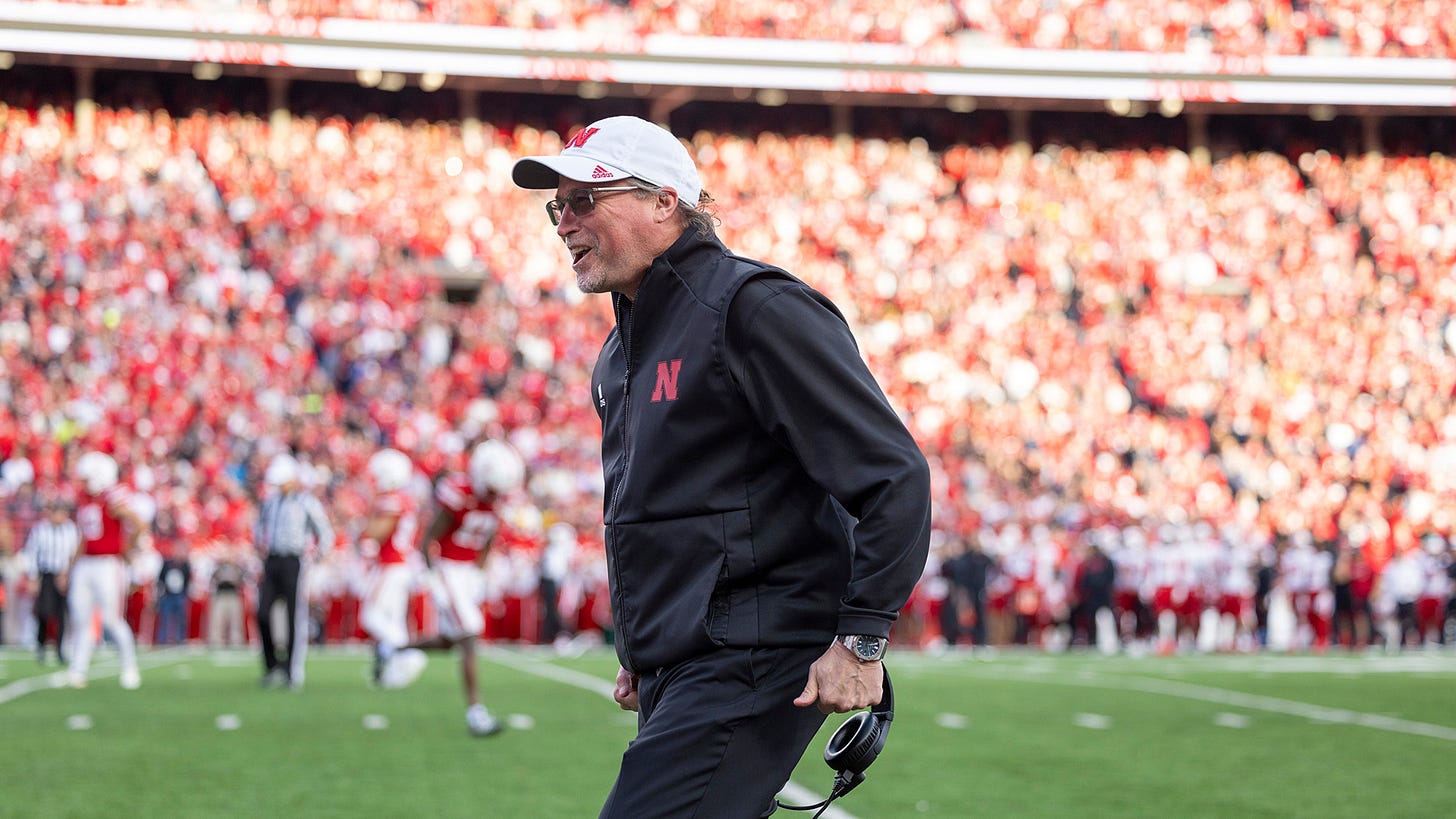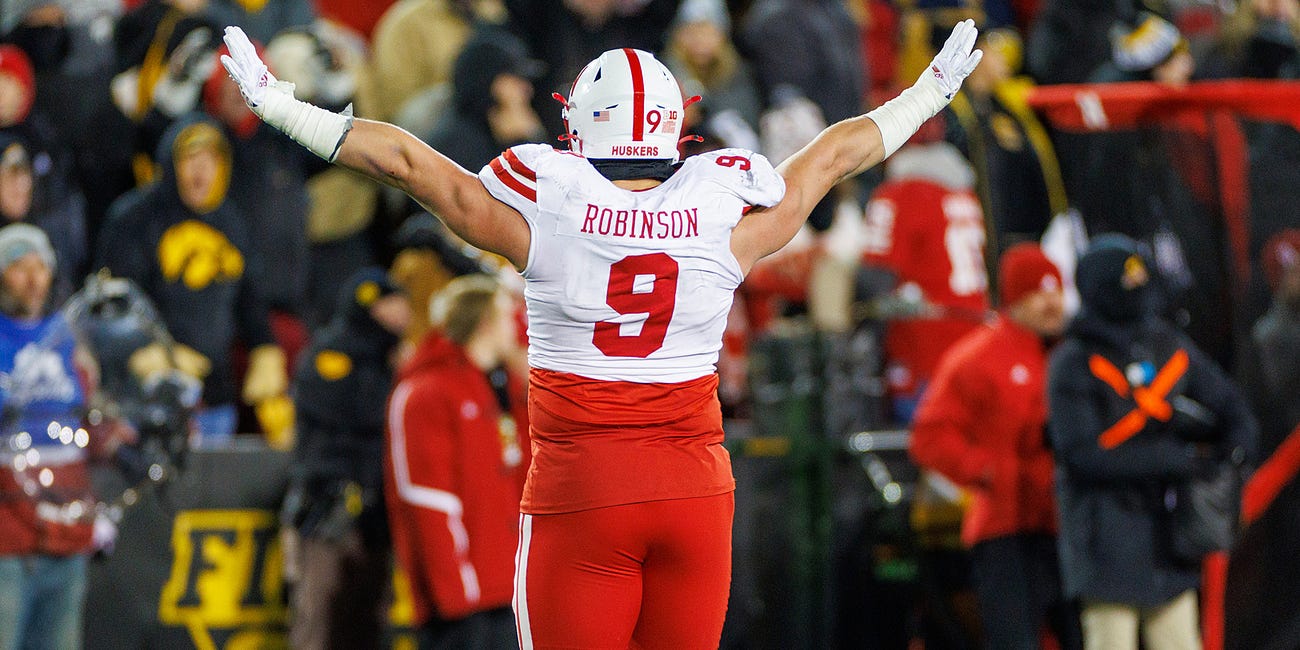It's still not about yards
A look at Dana Holgorsen's history with one of the stats that "matter."
Dana Holgorsen hit for the Daily Double last week. Intentionally or not, Nebraska’s offensive coordinator in his first press availability of the spring invoked Bo Pelini’s well-worn “it’s not about yards, ma’am, it’s about points” quip.
“I’ve got goals for our offense, but it’s now how much rushing yards, how much passing yards or anything else,” Holgorsen said. “It’s all about efficiency, first downs, third down conversions, touchdowns in the red zone, things that matter. To me, yardage doesn’t matter.”
Simple enough. Fairly standard coach POV—they spend all their time preparing to win, have ideas how to do it and then are the ones most at peace with “whatever it takes.”
That was Holgorsen’s final answer of the press conference, but he had one more comment of his own. As he folded up his practice plan, he held up a finger and said, “Yards per play matters,” and walked away.
Intentionally or not, it reminded of The (Marcus) Satterfield Incident, perhaps best summarized by the following quote: “I honestly don’t even know what leads the country in yards per play.” Not to make more of that than has already been made, but just based on the evidence presented it seems safe to assume Holgorsen knows.
He should, a few of his offenses were in the running for that title. In the interest of not what’s best, but more likely what could be in store for Nebraska, let’s take a quick look at Holgorsen and yards per play (which “matter”).
While there’s an entire world of “advanced analytics” out there, most coaches (and football nerds) will tell you yards per play is about the most telling number you can get from the traditional box score. It’s pretty simple, the number is a quick way to measure what an offense or defense did on every play. The team with a ypp edge typically wins, so long as turnovers, third-down conversions or some other small-sample category isn’t way out of whack.1
To set the stage, Nebraska averaged 5.38 ypp (98th) by BCftoys.com’s measure, which removes garbage time and games against FCS opponents. Here’s Holgorsen’s track record since 2007, his first season as a lone offensive coordinator or head coach:2
I was a little hesitant with including the numbers from Holgorsen’s head coaching stints because how do you assign value between the HC and OC? Holgorsen hired some pretty good OCs3 at West Virginia and Houston, so weight it however you see fit. I still think there are some broad takeaways from what’s here.
First, the blockbuster OC years sort of speak for themselves with four straight top-10 finishes in yards per play. Holgorsen went to be the coordinator and coach-in-waiting at West Virginia in 2011, but Bill Stewart’s summer retirement4 made waiting unnecessary. With quarterback Geno Smith and standout receivers Tavon Austin and Stedman Bailey the Mountaineers threw it often, as Holgorsen noted last week and had a top-20 offense to show for it both years. (If this makes you wonder what’s in store this year for NU’s offense with a 5-star pocket QB and more intriguing receivers than running backs, me too.)
Without Smith and the others, WVU’s offense regressed to middle-of-the-pack in 2013, but—and this was perhaps the most surprising to me in how utterly conventional it was—gradually progressed, year by year, back to nearly 7 yards per play and the top 10. At the end of the 2018 season, Holgorsen jumped to Houston.
It was more of a mixed bag with the Cougars. There were a couple of good offenses there in ypp (2019, 2022), but, if you throw out or at least discount 2020,5 Holgorsen’s lowest yards per play of the years represented above came in the season when he got fired.
Bottom line, Holgorsen’s average over 17 seasons was 6.34 ypp with an average ranking of 31st. A Nebraska offense was last better than that average in 2021 (6.4), though the surprising thing here is that a Scott Frost offense only topped 6 yards per play twice over five seasons.6
In 21 games with Satterfield calling plays over 2023–24, the Huskers were at 5.25. Over Holgorsen’s four games—in a very uncommon November switch—NU averaged 5.65. That included 4.39 against an unforgiving Iowa defense on an eye-wateringly cold night.
Those four Holgorsen games are probably our best guide for 2025. Nebraska become slightly more productive from a yards per play perspective with little more than a change in preparation and the plays being called. The plays themselves were the same.
If we’re trying to ballpark what might be a good but still reasonable number, I’d be at 6 yards per play based on Holgorsen’s track record. That’s roughly top-40 offense, which when viewed that way would feel like a big jump from 98th in 2024.
For our paid subscribers I’ll dig more into what a number like that, and some others would mean for Nebraska in the third and (for now) final entry in The Equation series.
The Equation: Maybe there's some magic to 9 wins
Nine wins still holds an important place in the history of Nebraska football. Or maybe I’m just the age of a person most likely to think that.
Yes, I understand the irony of writing that on a site for Nebraska fans. The Huskers have certainly defied odds over the past decade.
He was Texas Tech’s co-OC in 2006.
His first OC at WVU was Shannon Dawson, now in the same position at Miami. Next was Jake Spavital, now Baylor’s OC. At Houston, Holgorsen started with giving a co-opportunity to a career running backs coach and offensive line coach. (Both are back as position coaches in the SEC.) He eventually brought Dawson back into the fold, before turning to an o-line coach in his final season. That coach, Eman Naghan, survived Holgorsen’s firing and remains the Cougars o-line coach.
He didn’t really have a choice.
I do.
His 2017 UCF team averaged 7.78.




